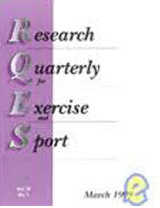Research in Review of INWA Scientific Committee:
The evaluation the usefulness of pedometry and accelerometry in the measurement of the energy expenditures in Nordic walking and
conventional walking as diagnostic parameters
Journal Article Review:
Polechoński J., Mynarski W., Nawrocka A. Applicability of pedometry and accelerometry in the calculation of energy expenditure during walking and Nordic walking among women in relation to their exercise heart rate J. Phys. Ther. Sci. (2015) Vol.27, No 11, pp 3525–3527
doi: 10.1589/jpts.27.3525
Purpose of the Study:
The study discusses the problem of assessing the suitability of pedometric and accelerometric techniques in estimating the energy expenditures (EE) in conventional walking (CW) and Nordic walking (NW) in relation to exercise heart rate (EHR) monitoring (pulsometry) during walking over a distance of 1,000 m.
Study Participants:
The study included 20 female College students ( 24 ± 2.3 years; body height, 165.6 ± 6.9 cm; weight, 58.6 ± 11 kg; body mass index, 21.4 ± 3.3 kg/m2).
Procedure or Methods:
The participants walked twice (NW and CW) the distance of 1,000 m, walking separately at a pace of 110 steps/min. They were allowed a 3-hour resting break between the tests to normalize the heart rate to a rest state and to set up the second measurement and measuring devices. Walking pace (step frequency) was set for each person by using a metronome sound signal. The end result of both tests was expressed as the walking duration in seconds (s), recorded by using a heart rate monitor.
The tests were conducted in the spring, in the afternoon, on flat asphalt paths in the recreation center. Before the measurements, the subjects were trained in advance to walk correctly with poles. Three types of measuring devices were used: a heart rate monitor (Polar S610i) to measure EHR and walking duration, an accelerometer (Caltrac) to assess EE, and a pedometer (Yamax SW-800) to record the number of steps and EE.
Results:
The participants who walked with poles covered a distance of 1,000 m at a speed 36.3 sec faster and with 65.5 fewer steps than in conventional walking. Correlation analysis revealed a moderate interrelationship between the results obtained with a pedometer and those obtained with an accelerometer during Nordic walking (r = 0.55) and a high correlation during conventional walking (r = 0.85).
Walking at a moderate pace using the NW technique was characterized by a significantly higher EHR and EE than CW, as measured by using the Caltrac accelerometer. By contrast, CW showed significantly higher EE than NW when measurements were made using a pedometer. EHR was significantly higher during NW (128.5 ± 19.0 bpm) than during CW (117.1 ± 17,0 bpm).
Subsequent analyses showed that the EE in NW, estimated by using an accelerometer, was approximately 5.5 kcal higher than in walking without poles. This phenomenon was confirmed by the higher EHR during NW, the value of which was moderately correlated with EE measured with an accelerometer.
The EE calculated from the number of steps (pedometer) was higher for CW, which clearly contradicts the lower EHR in this form of walking. The highly probable cause of this discrepancy is that a pedometer estimates the EE from the number of steps, which was higher in CW. Accelerometry is based on a more advanced technology and measures the acceleration that better characterizes intensity as a quality parameter of physical activity, as opposed to the number of steps, which is a quantitative parameter. In light of this argument, it should be concluded that an accelerometer is more useful for estimating EE in NW.
The note from the INWA Scientific Committee: The INWA Scientific Committee recommends the use heart rate monitors for estimating the energy expenditures and the intensity of the load during Nordic walking sessions.

link:
